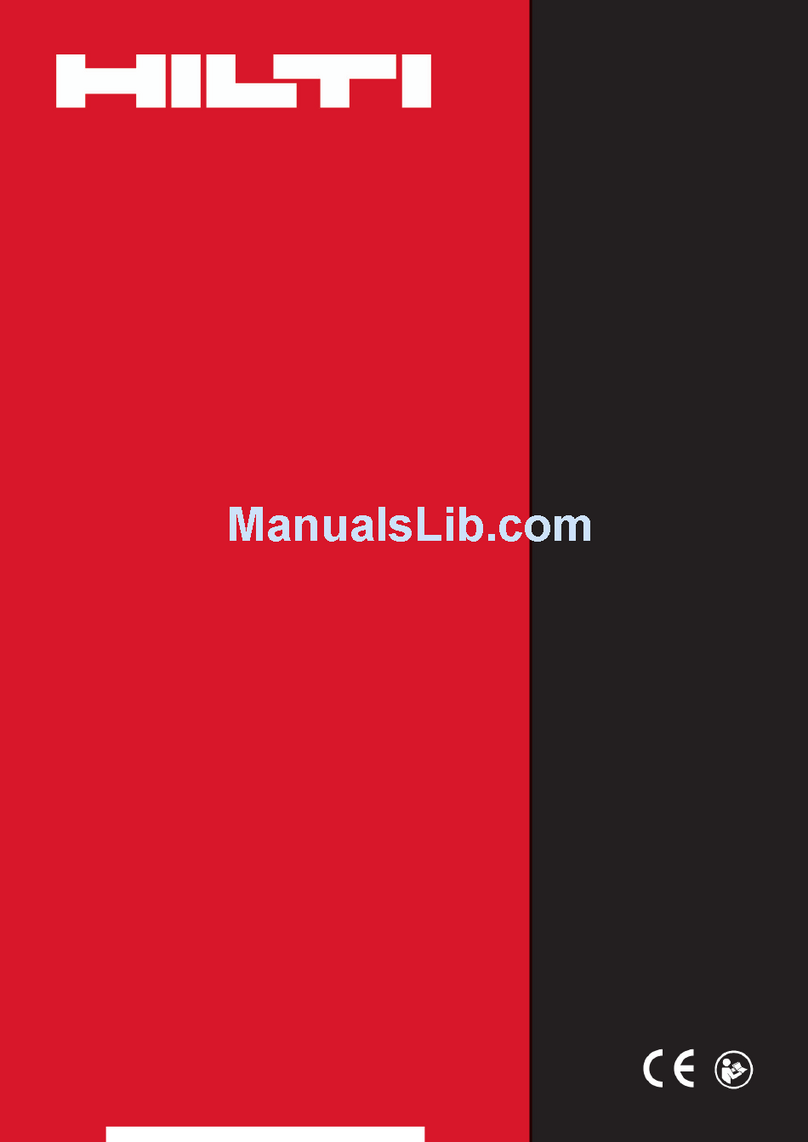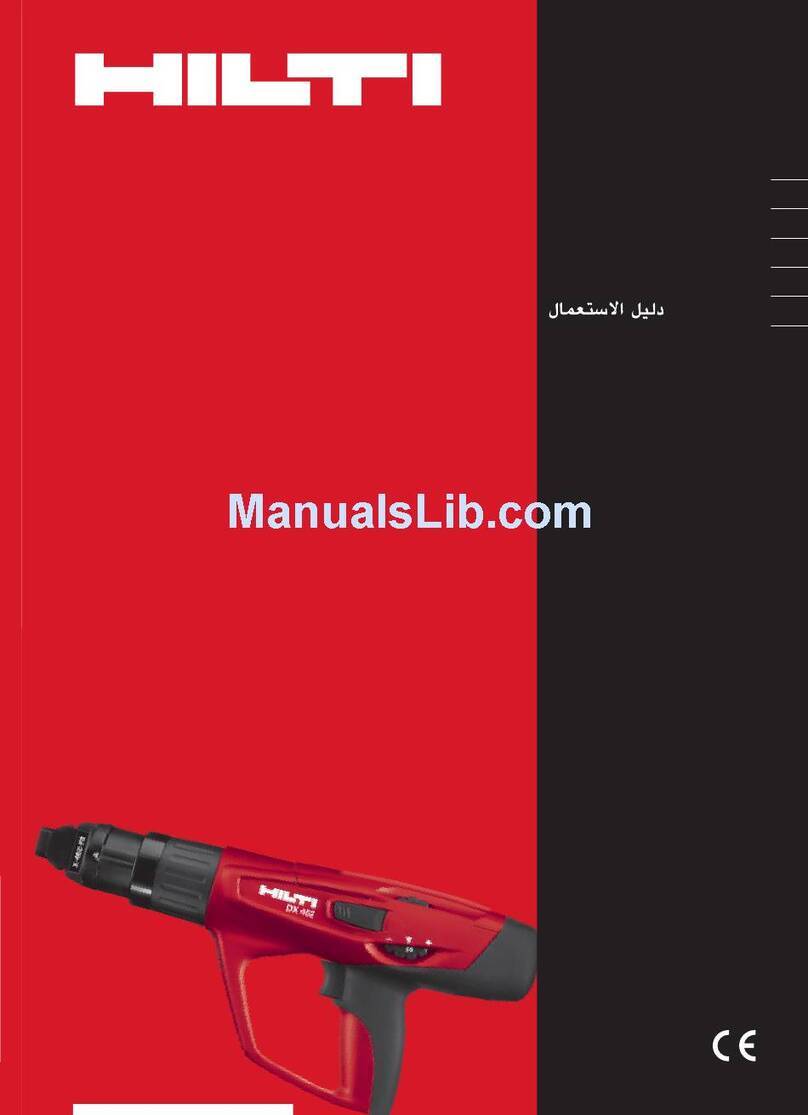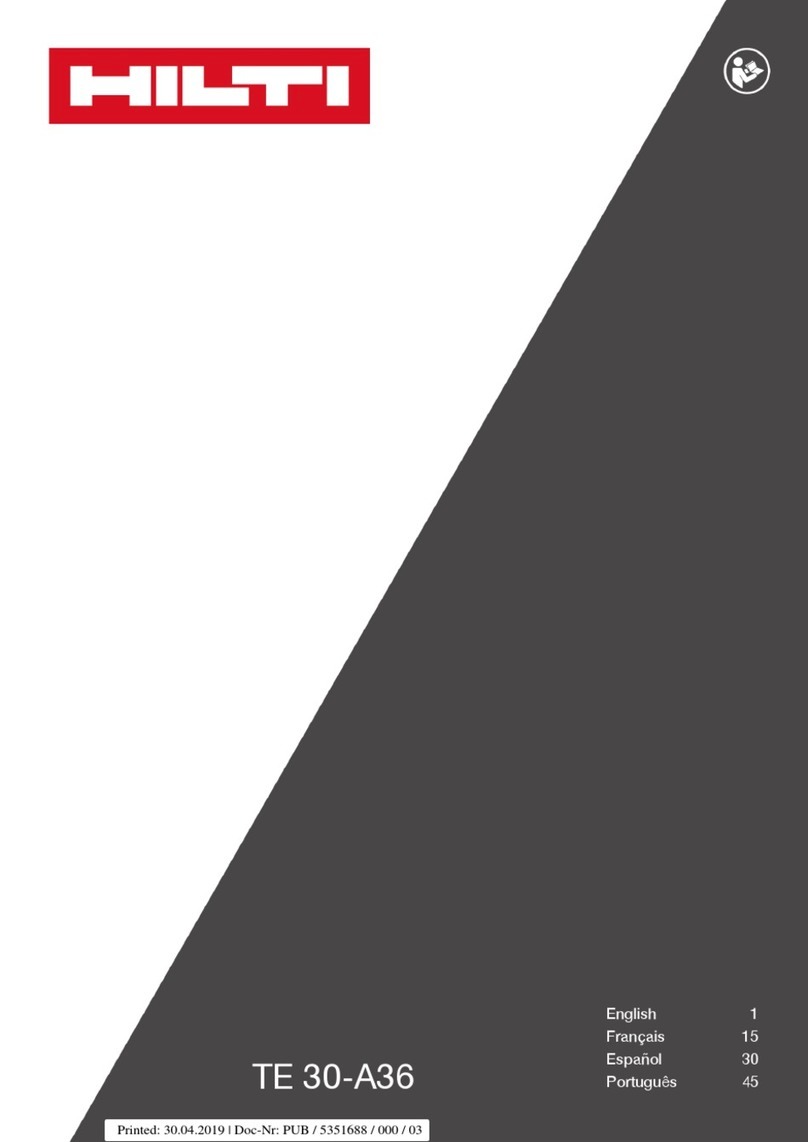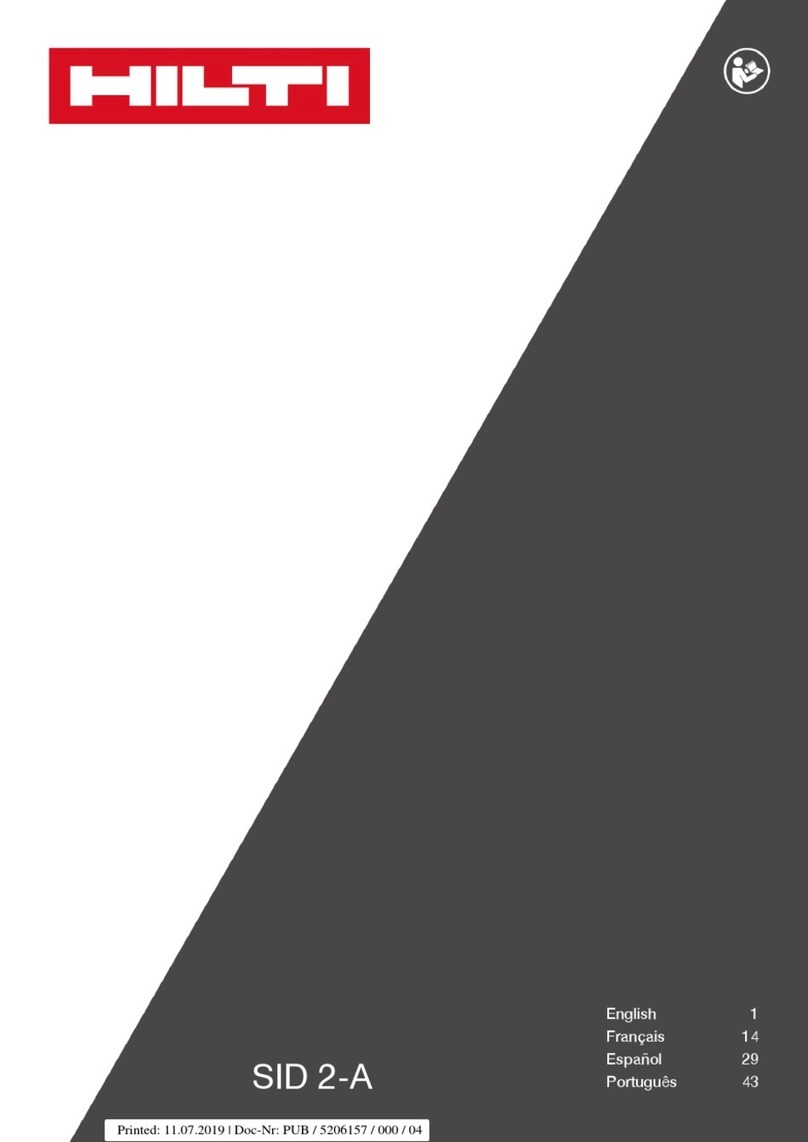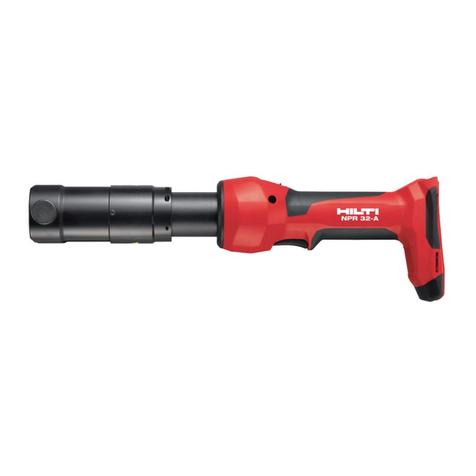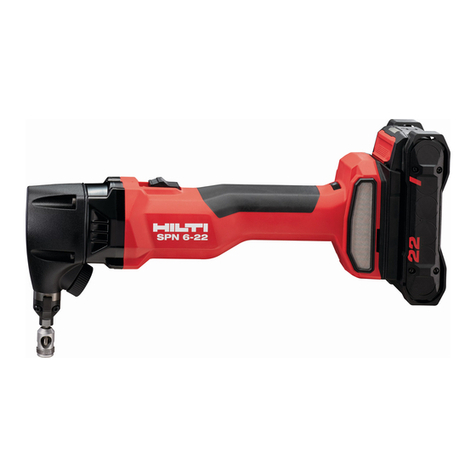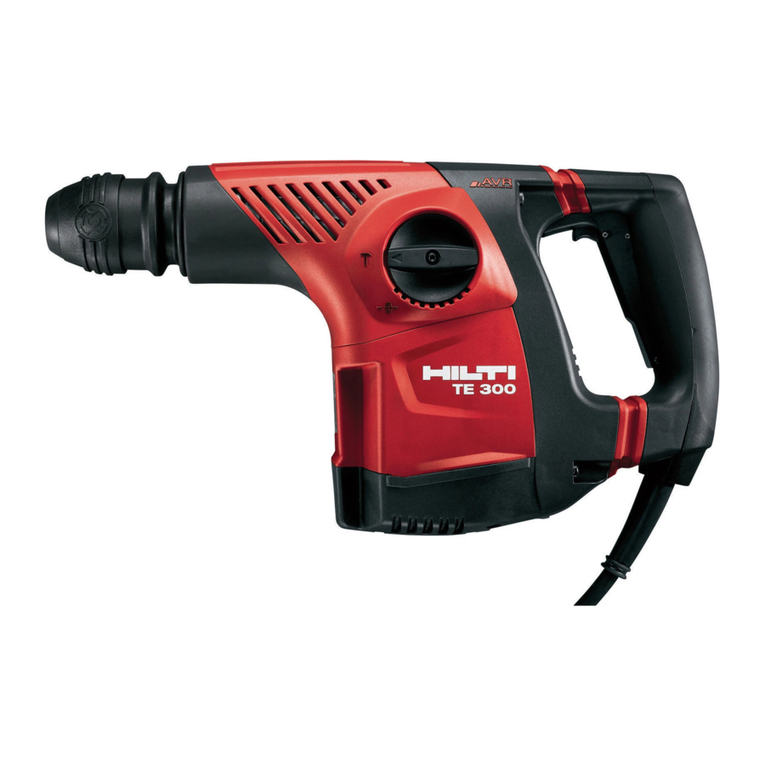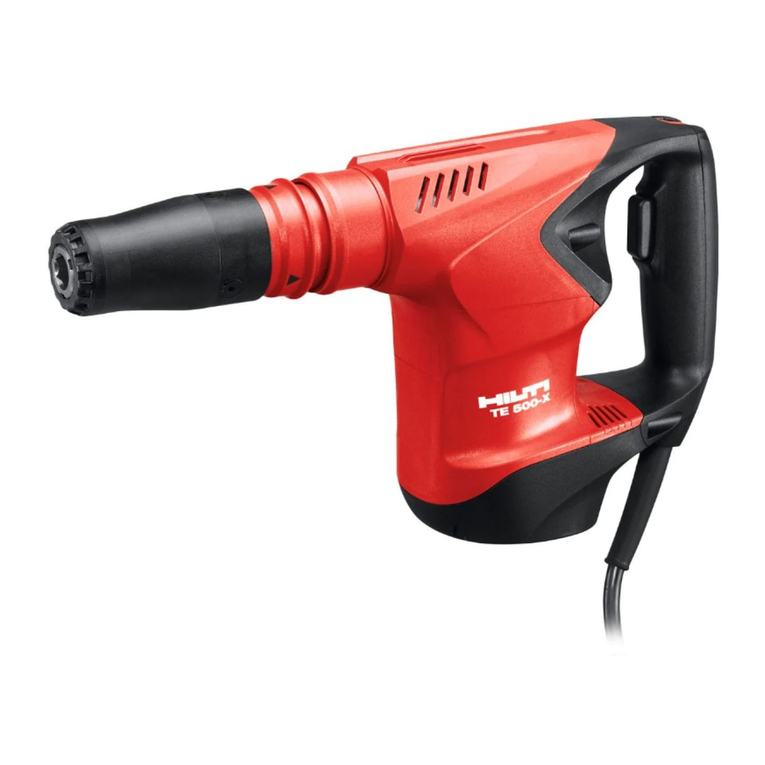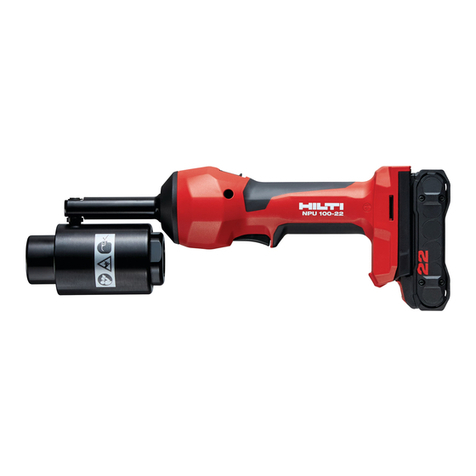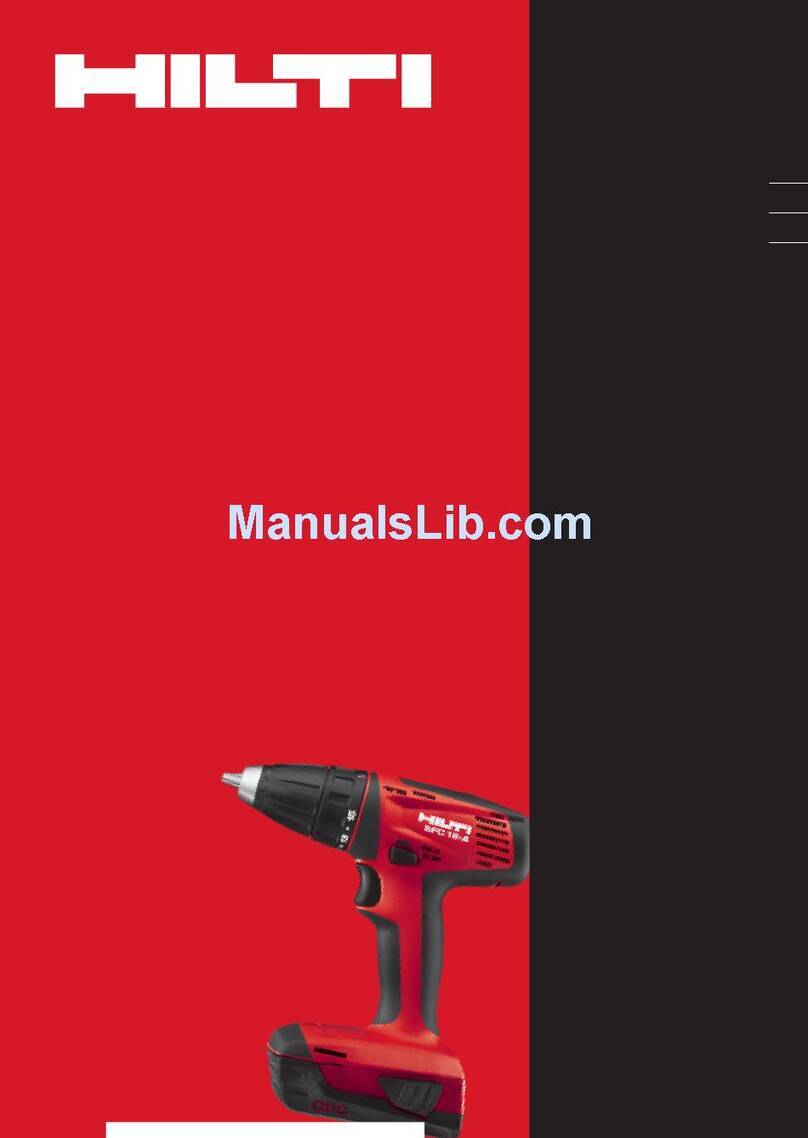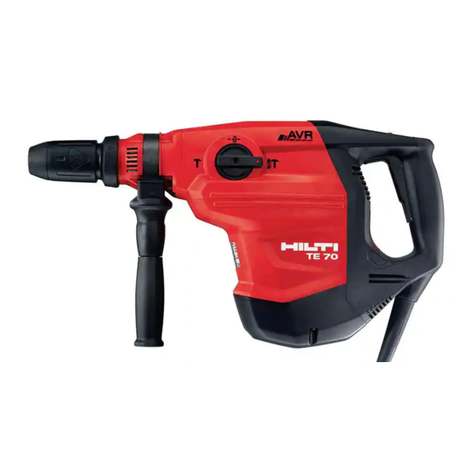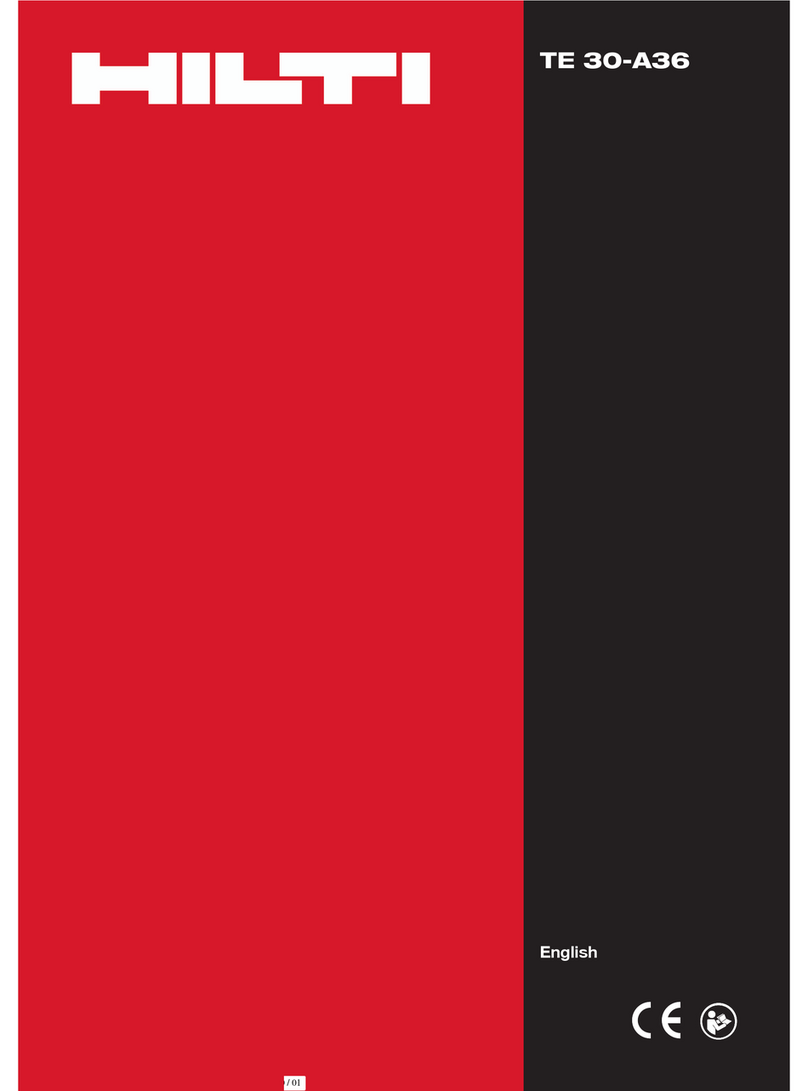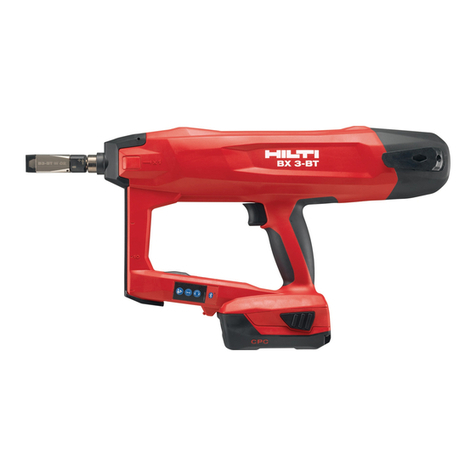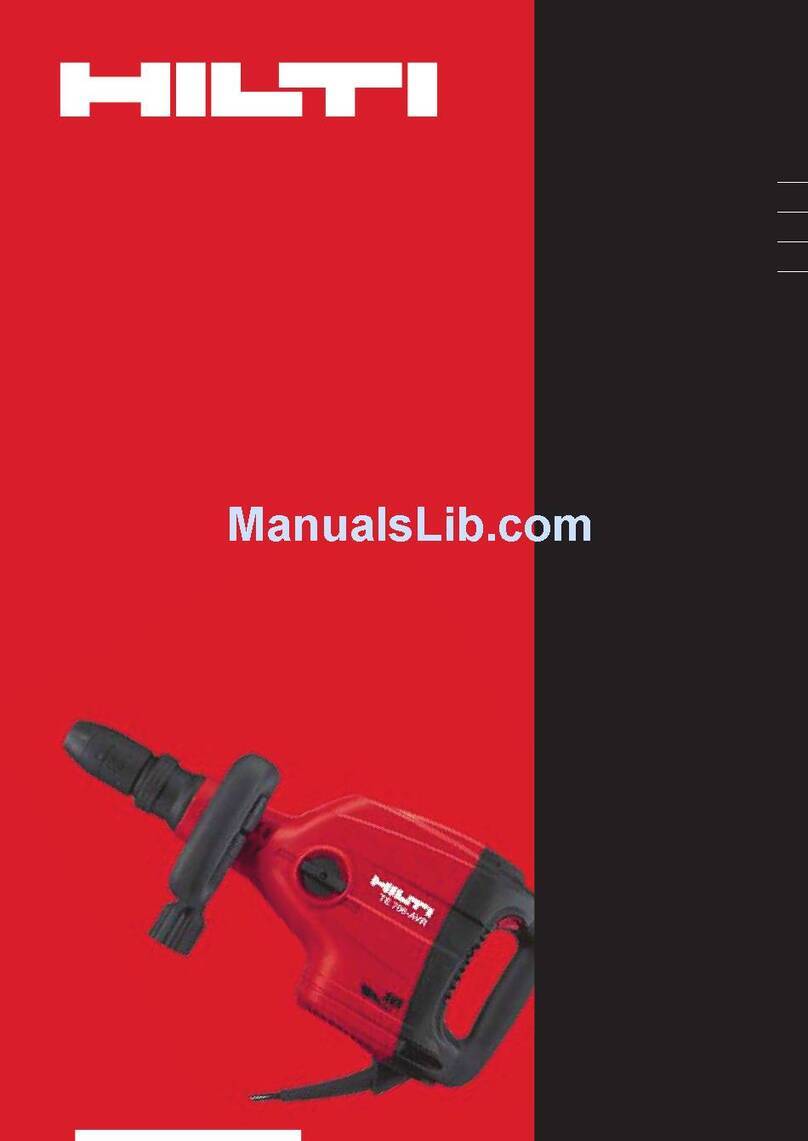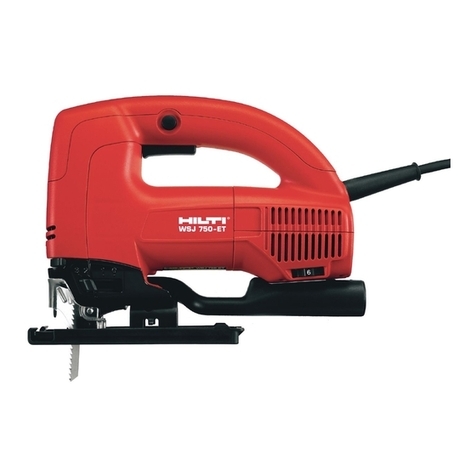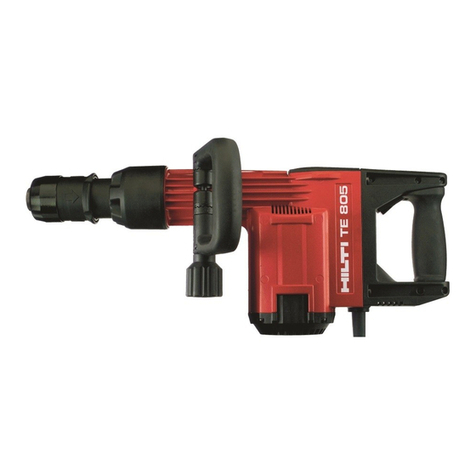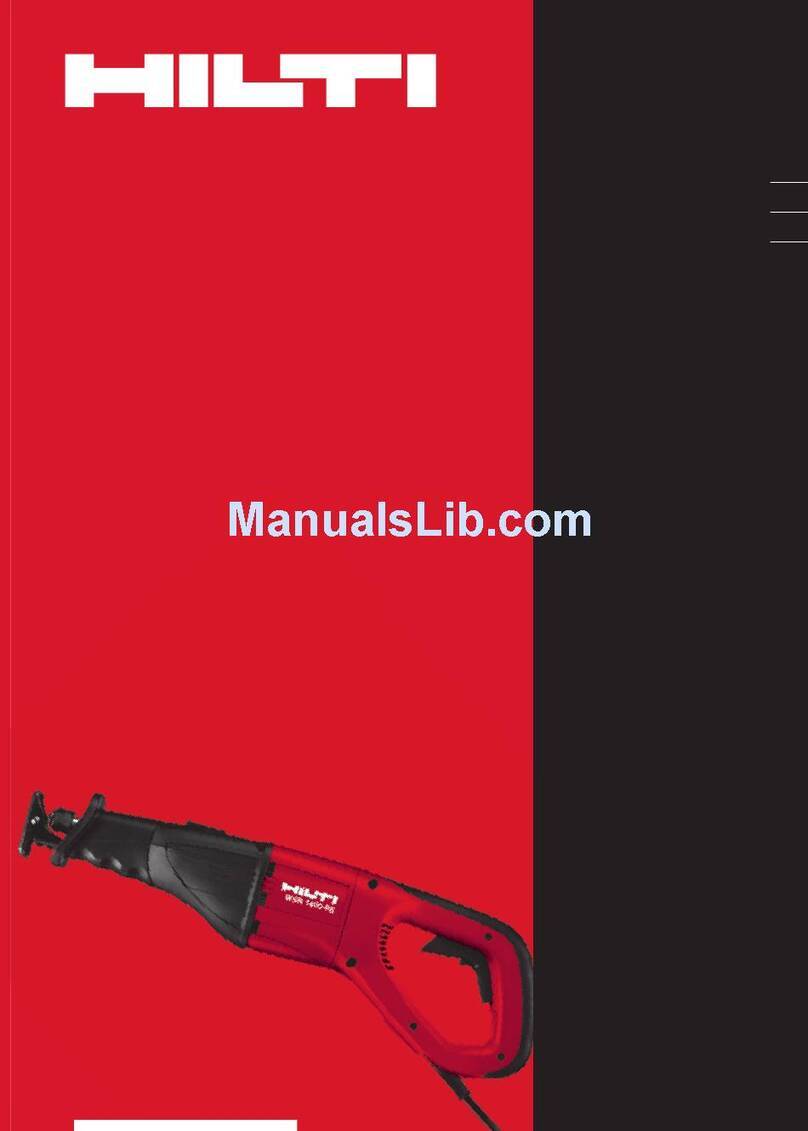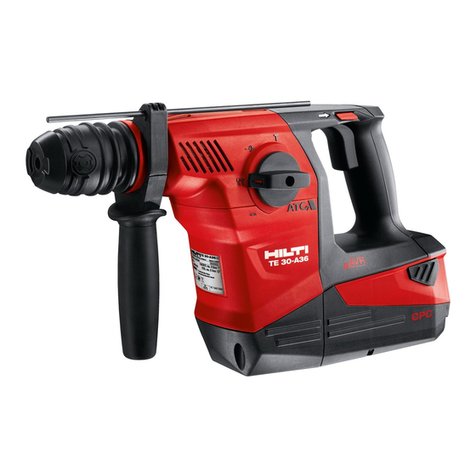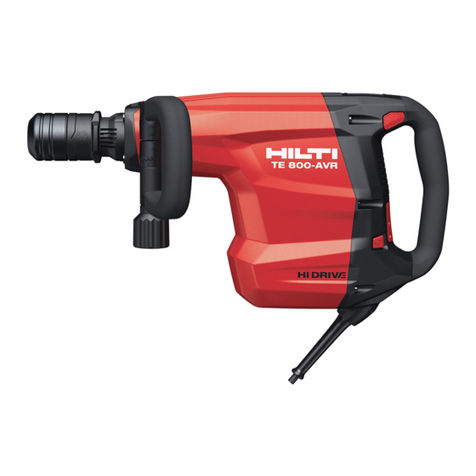6
2. Safety precautions
General safety information
■Sawing work influences the statics of the structure.
Approval must be obtained from the site engineer or
architect prior to carrying out drilling and sawing
work.
■You must be fully aware that working with the
D-LP15/DS-TS 22 hydraulic saw system always
involves a certain element of risk due to wear or dam-
age to parts. Check the condition of the entire system,
including accessories, each time before use to ensure
it functions correctly.
Wearing parts such as the blade guard holder rubber,
end stop, blade mounting screw, flush-cutting blade
mounting screws, etc., should be inspected particular-
ly carefully. Check that all parts have been assembled
correctly and consider all other factors that could influ-
ence operation of the equipment.
Contact your Hilti representative or Hilti service centre
if faults or deficiencies are found.
■Use the hydraulic saw system only when you have
read the operating instructions, when you are familiar
with the information contained therein and when you
have been trained to use the equipment safely by a Hilti
specialist. All warnings and safety information must be
observed.
■The area in front of, behind or below the surface
where sawing work or drilling work is to be carried out
must be secured in such a way that persons or equip-
ment cannot be injured or damaged by falling objects.
If necessary, concrete cores or blocks of concrete that
have been cut free should be secured to prevent them
falling.
■The operator in charge must be aware of the possi-
ble dangers and of his responsibility for safety, both
with regard to himself and to others.
■Read the operating instructions carefully before
operating the equipment for the first time and observe
all precautions and instructions contained therein.
■The influences of the environment in which you
are working must be taken into account. Do not posi-
tion the equipment where the hydraulic unit is liable
2.1
to become very wet. The hydraulic unit must be kept
level during operation, i.e. on a horizontal surface.
Secure the hydraulic unit at locations where there
may be a risk of it falling (e.g. on scaffolding). The
electric extension cable and its plugs and sockets
must not be allowed to lie in water. Do not use the
equipment in the vicinity of inflammable liquids or
gases. Make provision for water removal and dispos-
al.
■Always keep the operating instructions with the
equipment and pass them on to any subsequent user
who has been trained in its use.
■When not in use, store the hydraulic saw system in
a locked, dry place out of reach of children.
■Use the hydraulic saw system only for the applica-
tions for which it has been designed.
■In addition to carrying out the specified care and
maintenance, careful cleaning is also a prerequisite for
safe, trouble-free operation of the equipment.
■Always stay alert and carefully observe the
progress of your work. Proceed logically and do not
use the equipment when you are unable to concentrate
on your work.
■Do not leave tools (e.g. open-end wrenches) in
place on the equipment. Check the drive unit to ensure
that all tools have been removed before switching on.
■Keep the working area tidy and well lit. An untidy
workplace and inadequate lighting increases the risk
of accident.
■Wear suitable, close-fitting work clothes including
a hard hat, protective goggles, protective gloves, safe-
ty footwear, ear protectors and a hair net, if you have
long hair.
■Respiratory protection should be worn when work-
ing in enclosed or poorly ventilated areas and when
dry cutting is being carried out.
■Keep children and other persons well away from
the workplace and allow no-one to touch the wall saw
or power cable.
■Failure to comply with the warnings and safety
information may lead to severe or possibly fatal
injury as well as serious damage to the equipment
and other property.
